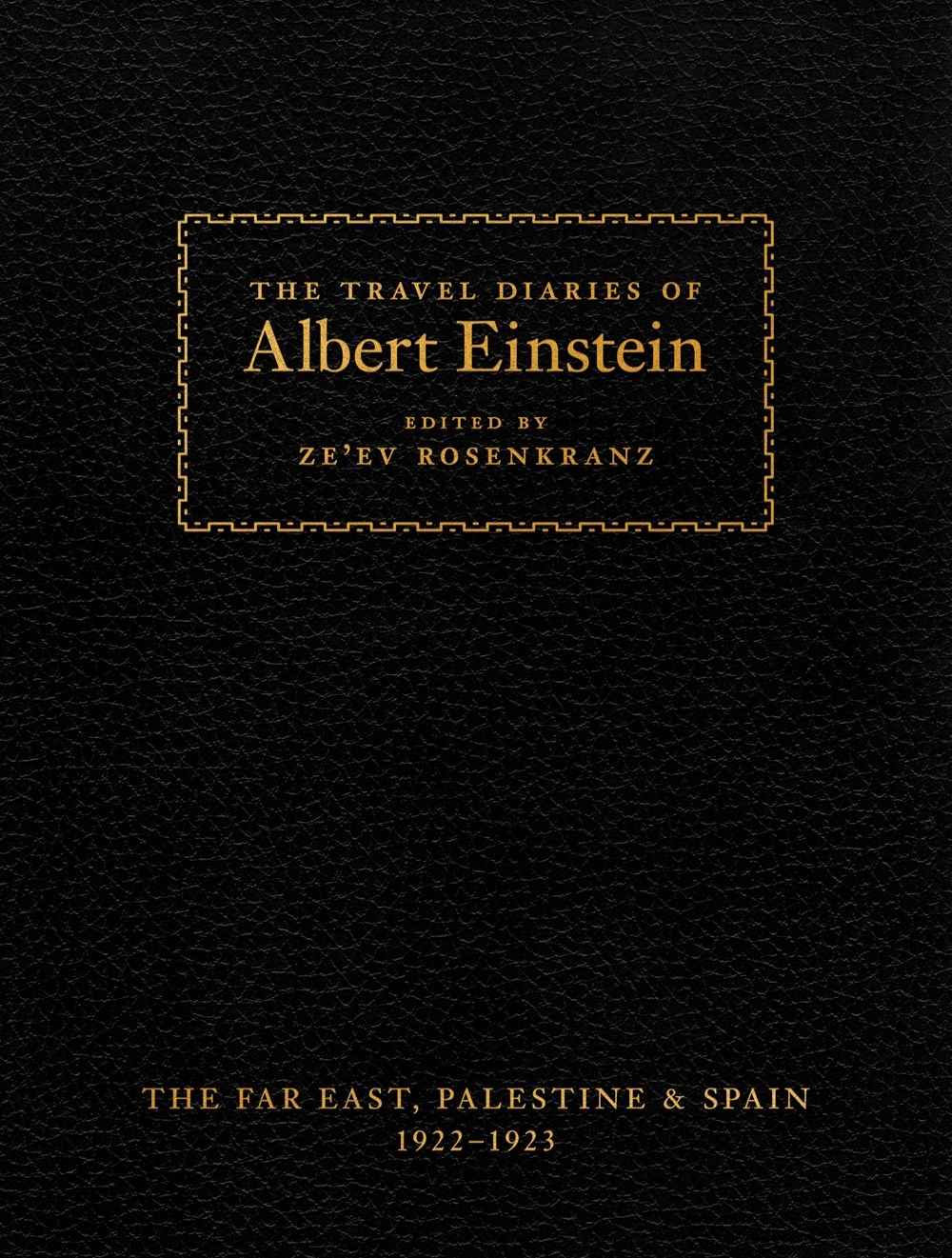The Travel Diaries of Albert Einstein
The Far East, Palestine and Spain 1922-1923

Editorial Princeton
Fecha de edición mayo 2018 · Edición nº 1
Idioma inglés
EAN 9780691174419
256 páginas
Libro
encuadernado en tapa dura
Resumen del libro
The first publication of Albert Einsteins travel diary to the Far East and Middle East
In the fall of 1922, Albert Einstein, along with his then-wife, Elsa Einstein, embarked on a five-and-a-half-month voyage to the Far East and Middle East, regions that the renowned physicist had never visited before. Einstein's lengthy itinerary consisted of stops in Hong Kong and Singapore, two brief stays in China, a six-week whirlwind lecture tour of Japan, a twelve-day tour of Palestine, and a three-week visit to Spain. This handsome edition makes available, for the first time, the complete journal that Einstein kept on this momentous journey.
The telegraphic-style diary entries--quirky, succinct, and at times irreverent'record Einstein's musings on science, philosophy, art, and politics, as well as his immediate impressions and broader thoughts on such events as his inaugural lecture at the future site of the Hebrew University in Jerusalem, a garden party hosted by the Japanese Empress, an audience with the King of Spain, and meetings with other prominent colleagues and statesmen. Entries also contain passages that reveal Einstein's stereotyping of members of various nations and raise questions about his attitudes on race. This beautiful edition features stunning facsimiles of the diary's pages, accompanied by an English translation, an extensive historical introduction, numerous illustrations, and annotations. Supplementary materials include letters, postcards, speeches, and articles, a map of the voyage, a chronology, a bibliography, and an index.
Einstein would go on to keep a journal for all succeeding trips abroad, and this first volume of his travel diaries offers an initial, intimate glimpse into a brilliant mind encountering the great, wide world.
Biografía del autor
Albert Einstein was born at Ulm, in Württemberg, Germany, on March 14, 1879. Six weeks later the family moved to Munich, where he later on began his schooling at the Luitpold Gymnasium. Later, they moved to Italy and Albert continued his education at Aarau, Switzerland and in 1896 he entered the Swiss Federal Polytechnic School in Zurich to be trained as a teacher in physics and mathematics. In 1901, the year he gained his diploma, he acquired Swiss citizenship and, as he was unable to find a teaching post, he accepted a position as technical assistant in the Swiss Patent Office. In 1905 he obtained his doctor's degree.<br><br>During his stay at the Patent Office, and in his spare time, he produced much of his remarkable work and in 1908 he was appointed Privatdozent in Berne. In 1909 he became Professor Extraordinary at Zurich, in 1911 Professor of Theoretical Physics at Prague, returning to Zurich in the following year to fill a similar post. In 1914 he was appointed Director of the Kaiser Wilhelm Physical Institute and Professor in the University of Berlin. He became a German citizen in 1914 and remained in Berlin until 1933 when he renounced his citizenship for political reasons and emigrated to America to take the position of Professor of Theoretical Physics at Princeton*. He became a United States citizen in 1940 and retired from his post in 1945.<br><br>After World War II, Einstein was a leading figure in the World Government Movement, he was offered the Presidency of the State of Israel, which he declined, and he collaborated with Dr. Chaim Weizmann in establishing the Hebrew University of Jerusalem.<br><br>Einstein always appeared to have a clear view of the problems of physics and the determination to solve them. He had a strategy of his own and was able to visualize the main stages on the way to his goal. He regarded his major achievements as mere stepping-stones for the next advance.<br><br>At the start of his scientific work, Einstein realized the inadequacies of Newtonian mechanics and his special theory of relativity stemmed from an attempt to reconcile the laws of mechanics with the laws of the electromagnetic field. He dealt with classical problems of statistical mechanics and problems in which they were merged with quantum theory: this led to an explanation of the Brownian movement of molecules. He investigated the thermal properties of light with a low radiation density and his observations laid the foundation of the photon theory of light.<br><br>In his early days in Berlin, Einstein postulated that the correct interpretation of the special theory of relativity must also furnish a theory of gravitation and in 1916 he published his paper on the general theory of relativity. During this time he also contributed to the problems of the theory of radiation and statistical mechanics.<br><br>In the 1920's, Einstein embarked on the construction of unified field theories, although he continued to work on the probabilistic interpretation of quantum theory, and he persevered with this work in America. He contributed to statistical mechanics by his development of the quantum theory of a monatomic gas and he has also accomplished valuable work in connection with atomic transition probabilities and relativistic cosmology.<br><br>After his retirement he continued to work towards the unification of the basic concepts of physics, taking the opposite approach, geometrisation, to the majority of physicists.








